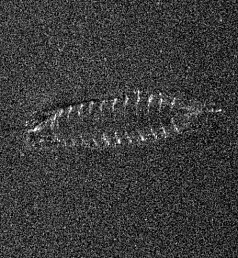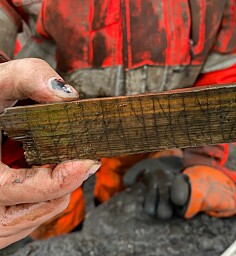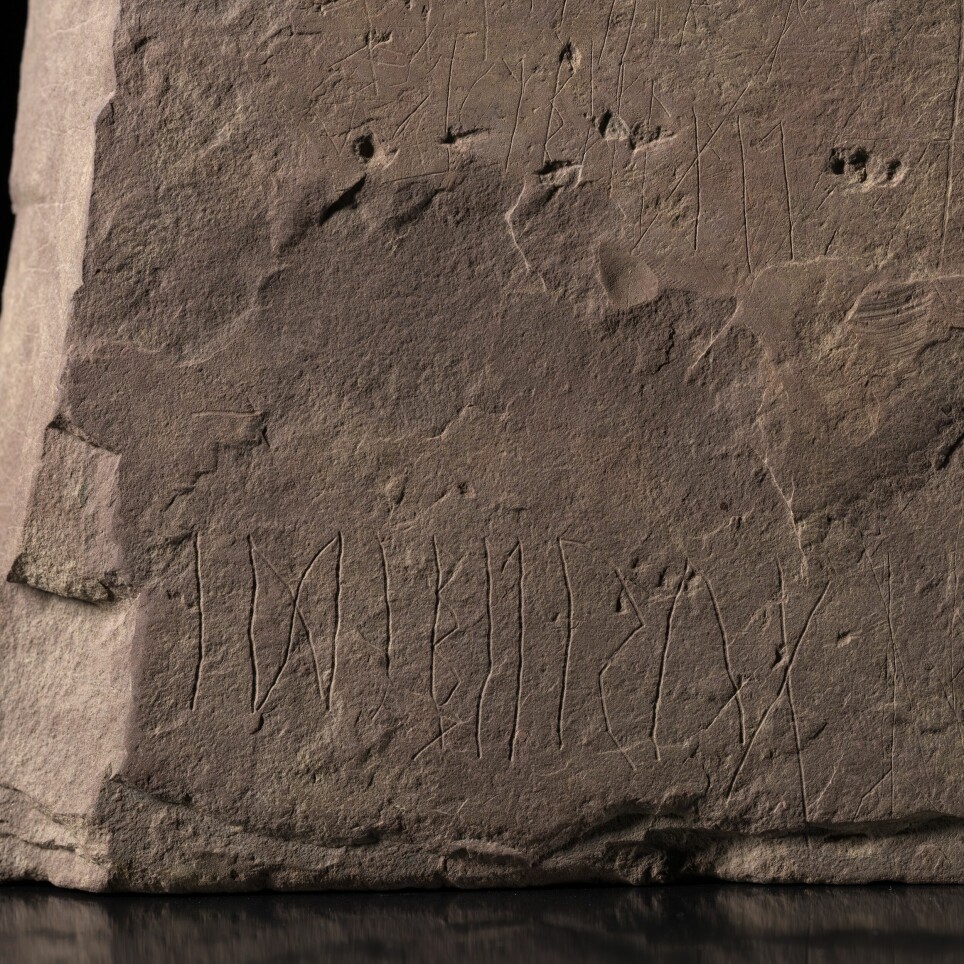
World’s oldest rune stone found in Norway, archaeologists believe
The find was kept secret by researchers for more than a year.
The ancient Norwegian rune stone was found during an excavation of a grave field in Hole municipality, near Tyrifjorden (Lake Tyri) west of the capital Oslo. It has an inscription the researchers believe may be between 1800-2000 years old.
The exceptional find was made during the fall of 2021, by archaeologists from the Museum of Cultural History in Oslo.
The oldest runes ever?
The find is finally made public after a radiocarbon dating of other material found in the grave together with the rune stone, show that these artefacts date back to some time between 0-250 CE. That means we are back in what is called the Roman Iron Age.
And it means, according to the researchers from the Museum of Cultural History, that it may be one of the earliest examples we have of words recorded in writing in Scandinavia.
We know very little about where the first runic alphabet once came from.
Perhaps this stone can help us figure out just how old the runic alphabet actually is?
And who made up this Germanic writing system with its very own letters?
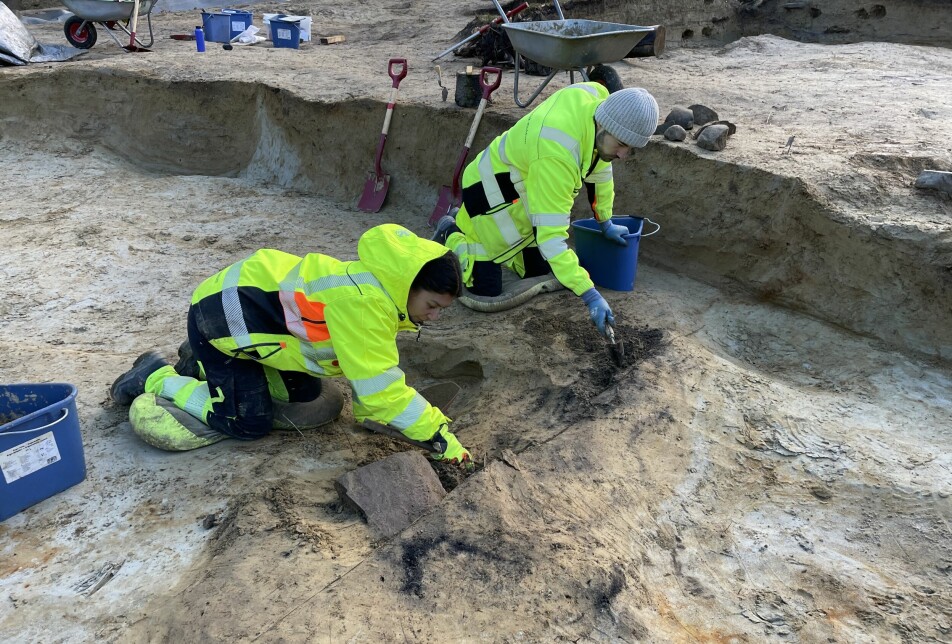
The Svingerud Stone
"Having such a runic find fall into our lap is a unique experience and the dream of all runologists," says runologist Kristel Zilmer, Professor of Written Culture and Iconography at the Museum of Cultural History, University of Oslo.
She has spent the past year working on investigating and interpreting the inscriptions on the rune stone, while her colleagues have worked on dating the grave in which the stone was found.
The stone has been named after the site where it was found – Svingerudsteinen, or The Svingerud Stone in English. (Map from google)
A woman named Idibera?
Eight of the runes on the front face of the stone may be spelling out the name of a woman, according to Kristel Zelmers analysis.
“The text possibly refers to a woman called Idibera and the inscription could mean 'For Idibera',” says Professor Zilmer.
Other possibilities are that idiberug is the rendering of a name such as Idibergu or Idiberga, or perhaps the kin name Idiberung.
Could it be that somebody carved the name of the person buried in the grave into this stone?
Proto-Norse language
We know a lot about the Viking Age in Norway, thanks to many written sources. We also know a lot about the Norse language from this time.
Less is known if we go back to the Roman Age. Experts have little knowledge about the Proto-Norse language that people in Norway and Scandinavia would have used.
The runes also changed a lot from the time when the very first were carved and to the time when newer runes were used during the Viking Age, almost a thousand years later.
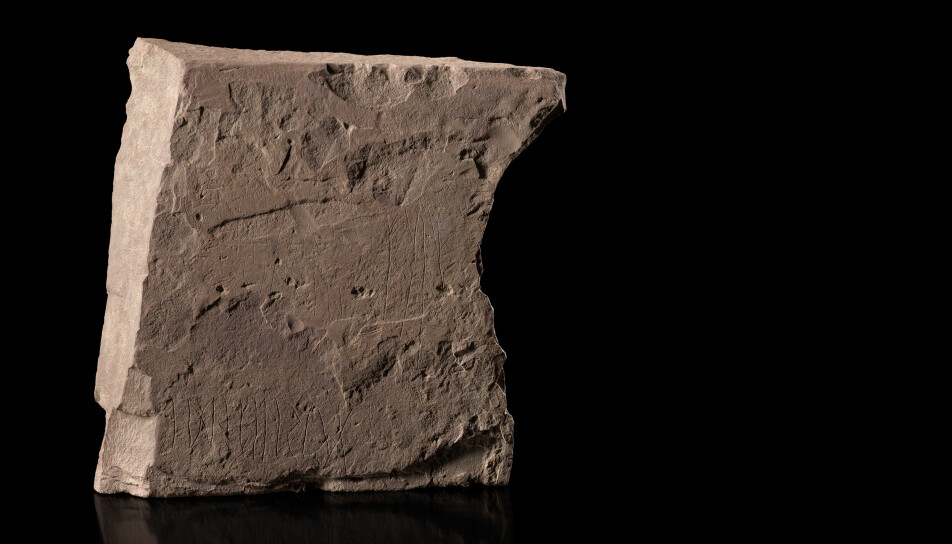
So what does it say?
“Not all inscriptions have a linguistic meaning. It’s possible that someone has imitated, explored or played with the writing,” Professor Zilmer says.
She wonders if perhaps somebody was learning how to carve runes on this stone.
Is the Svingerud Stone carved by some of the first people in Norway who were able to carve runes?
The first three runes of the alphabet can be found in one place on the stone ᚠ (f), ᚢ (u) and ᚦ (th). In other letters: f, u and th.
The runic alphabet is called the futhark precisely because these are the first letters in this alphabet. The runic alphabet which has been used in The Svingerud Stone is called the older futhark.
A spearhead from around 200 CE
A spearhead from Toten, a district in Innlandet county in the eastern part of Norway, is inscribed with some of the oldest known runes. They spell out the word raunijaR – challenger – and the spearhead is from around the end of the 100s or the beginning of the 200s.
Some of the earliest runic inscriptions we know are from Denmark. One of them is written on a comb and could be from the year 160.
The Kylver stone, which was found on the Swedish island Gotland, is from around 400. This is considered the oldest example of an inscription which includes the entire older runic alphabet.
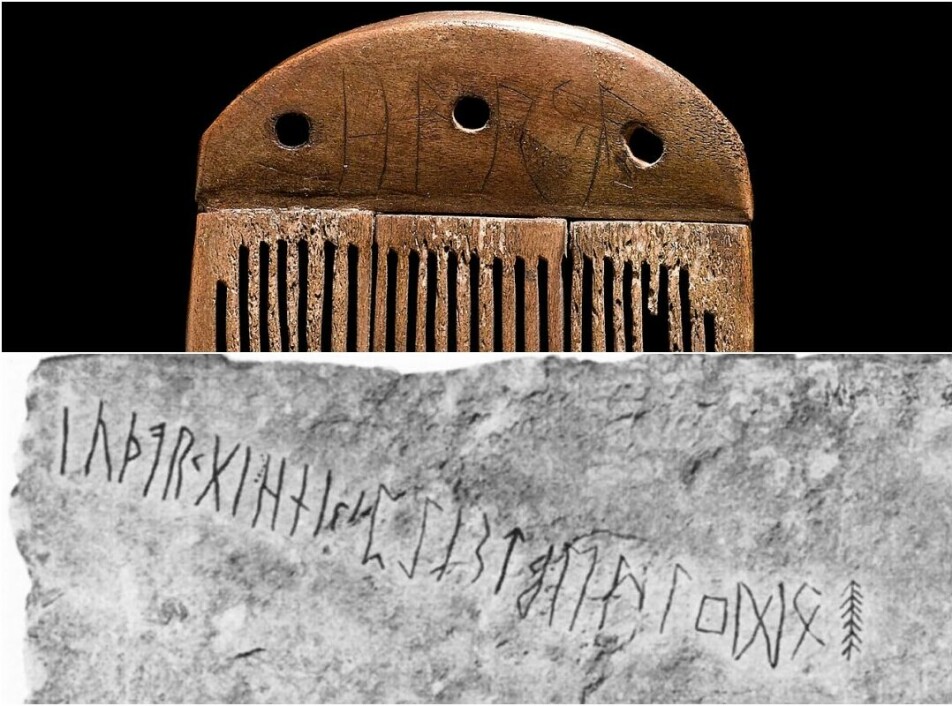
The word rune may mean 'secret'
The word rune may have been derived from the Norse word rún, which means secret. There are however also other possible interpretations.
The oldest runic inscriptions we know have often been carved into small things such as weapons or jewellery.
Researchers have assumed that the first runic alphabet was invented by somebody sometime between year 0 and 200. Meaning not too many years after the beginning of the Common Era.
There has been no lack of theories that try to explain how this Germanic alphabet came to be.
But we still know very little for sure.
What does seem fairly likely, is that whoever invented the first runic alphabet may have been inspired by the Latin alphabet. Or perhaps also by the greek or a north Italian alphabet.
At the same time, the first runic alphabet is structured very differently from the Latin alphabet.
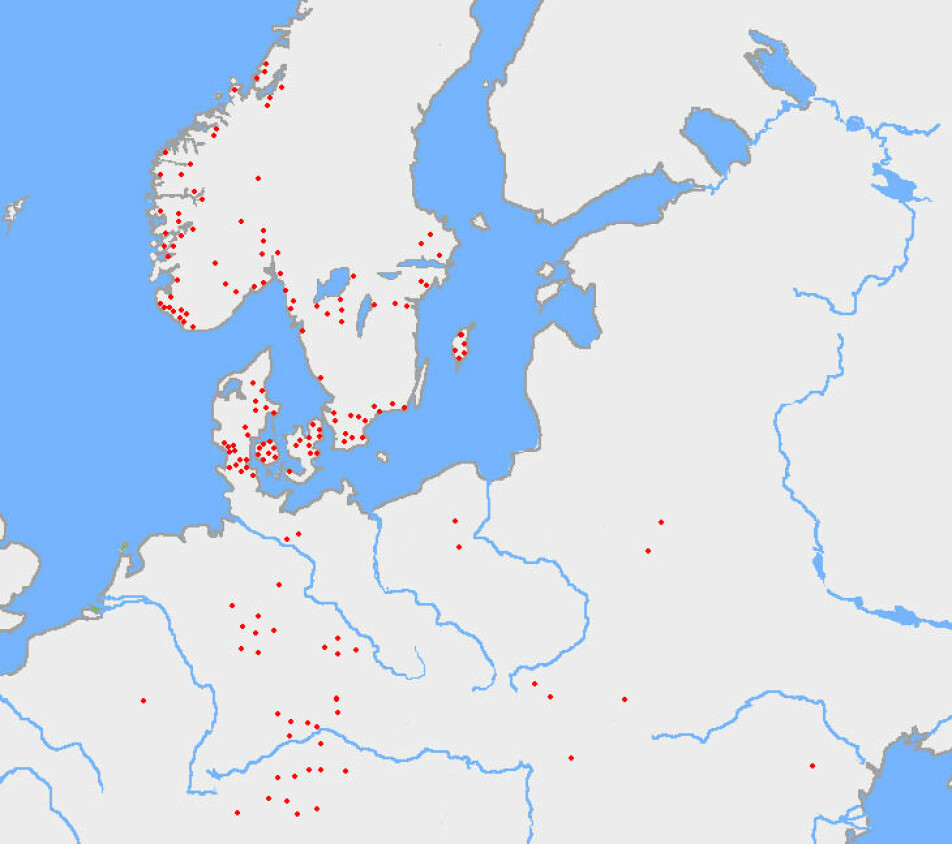
Letters from Arabia?
One possible theory suggests that some of the letters came directly from the Arabia of that time.
Around a thousand Nabatean archers are said to have served in the Roman Empire, in what today is known as Germany. These soldiers from Arabia may have brought with them knowledge about some of their letters all the way up to the outer border of the Roman Empire, far North.
This theory has been proposed by the Swedish linguist John Troeng. While most of the runic letters probably derive from Latin letters, it is possible to identify at least five letters whose shape and sound is inspired by the Aramaic Semitic alphabet which was used in the Nabatean Kingdom, in present-day Sinai, Jordan and Southern Israel.
Kristel Zilmer, among others, are however doubtful that this theory is correct.
Used for a long time
In the Nordic countries, runes were replaced by Latin letters between year 1000 and 1200.
In some places, however, they were used throughout the Middle Ages and up until around year 1500. They were in use the longest in Iceland and Gotland. The Sami people are said to have used runes up until the 18th century.
In certain places in the interior of Sweden, runes were even used up until the 19th century.
This article was amended on 18 January at 18:21. Proto-Germanic has been changed to Proto-Norse. The dating of the spearhead from Toten has been changed from year 160 go some time toward the end of 100 or the beginning of 200. We have added that the word rune may mean 'secret', but that this is only one of many possible interpretations. Finally we have also added that Kristel Zilmer is doubtful of John Troengs theory about the influence of Arabian letters on runes.
Translated by: Ida Irene Bergstrøm
References:
John Troeng: A Semitic origin of some runes. An influential foreign presence in Denmark c AD 200, Journal of Swedish Antiquarian Research, 2003
Read the Norwegian version of this article on forskning.no








